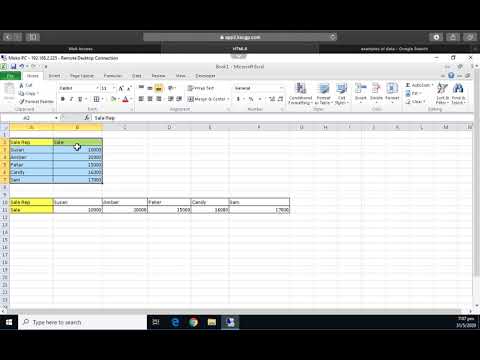5 Simple Tricks to Expand Your Excel Sheets Instantly

Are you finding your Excel spreadsheets feel tight and restrictive? Spreadsheets are meant to be flexible tools that help in organizing, analyzing, and storing data, yet often users feel boxed in by their limitations. Fortunately, Excel has various features and techniques that can immediately expand and enhance the functionality of your sheets. In this article, we’ll cover five simple but powerful tricks to maximize the efficiency of your Excel experience, improving both productivity and user experience.
1. Use Dynamic Ranges for Formulas and Charts

Static data ranges can become cumbersome as you add or remove data. Here’s how you can make your formulas and charts dynamically adapt:
- Named Ranges: Create named ranges in Excel that automatically expand when you add new data. Use the
OFFSETandCOUNTAfunctions together to define a dynamic range:
=OFFSET(A1,0,0,COUNTA(A:A),1)Now, whenever you add more data below your initial range, Excel will account for it.
📝 Note: Remember, COUNTA counts non-empty cells, which might include headers or text. Use COUNT for numerical data instead.
2. Implement Data Validation and List Management

Data Validation ensures that only valid entries go into your spreadsheets, reducing errors and improving data integrity. Here’s how you can leverage this:
- Dropdown Lists: Use data validation to create dropdown lists for uniform data entry.
- Error Alerts: Set up custom error messages to guide users when they enter invalid data.
- Automate List Management: Use Excel’s
UNIQUEfunction to automatically list unique values from a larger dataset:
=UNIQUE(A1:A100)This can help in creating dynamic dropdowns that adjust with your data.
3. Master the Art of Pivot Tables

Pivot Tables are one of Excel’s most powerful features, allowing for quick data summarization and analysis:
- Dynamic Source Ranges: Use named ranges or Excel Tables as source data for Pivot Tables to automatically refresh and include new entries.
- Slicers: Add slicers to visually filter Pivot Table data, making it easier for users to sift through large datasets.
- Group Data: Excel allows grouping of data by various time periods, categories, or ranges, giving you flexibility in data presentation.
4. Expand Capabilities with Add-Ins

Excel’s functionality can be significantly expanded with add-ins. Here are some options:
- Power Query: For data transformation and mashup from multiple sources.
- Power BI: While not an Excel add-in, it integrates seamlessly for advanced data analytics and visualization.
- Analysis Toolpak: Includes specialized statistical tools for more in-depth data analysis.
Installing these add-ins can transform your Excel spreadsheets into sophisticated data analysis platforms.
5. Utilize Conditional Formatting

Excel’s conditional formatting feature can highlight critical data points, make patterns or trends visible, and even guide users through their work:
- Highlighting Key Values: Set up rules to automatically highlight cells based on their content, like top values, duplicates, or cells that meet specific criteria.
- Data Bars and Color Scales: These visual aids help in quickly scanning large data sets.
- Icon Sets: Use icons to represent data categories, enhancing your spreadsheet’s readability and analysis capabilities.
Mastering conditional formatting will make your spreadsheets not only functional but also more visually appealing and easy to analyze at a glance.
In wrapping up our exploration into expanding Excel's capabilities, we've seen how dynamic ranges, data validation, Pivot Tables, add-ins, and conditional formatting can take your spreadsheets from functional to formidable. These techniques can streamline your data handling, reduce errors, and provide a richer experience for users working with your Excel files. Each trick is easy to implement, yet they collectively offer a powerful suite of tools to boost productivity and manage complexity in Excel. Now, go and apply these tricks to your own spreadsheets to see how they can enhance your work!
What is the quickest way to refresh a Pivot Table?

+
The quickest way to refresh a Pivot Table is by clicking on the “Refresh” button in the “Analyze” tab when a Pivot Table is selected.
Can I use conditional formatting to highlight entire rows based on one cell’s value?

+
Yes, by selecting the whole range and using conditional formatting with a formula rule that checks the value of the relevant cell in each row.
How can I prevent others from altering formulas or data validation rules in my spreadsheet?

+
Use Excel’s protection features to lock cells, set passwords, or restrict user access to modify parts of the spreadsheet.



